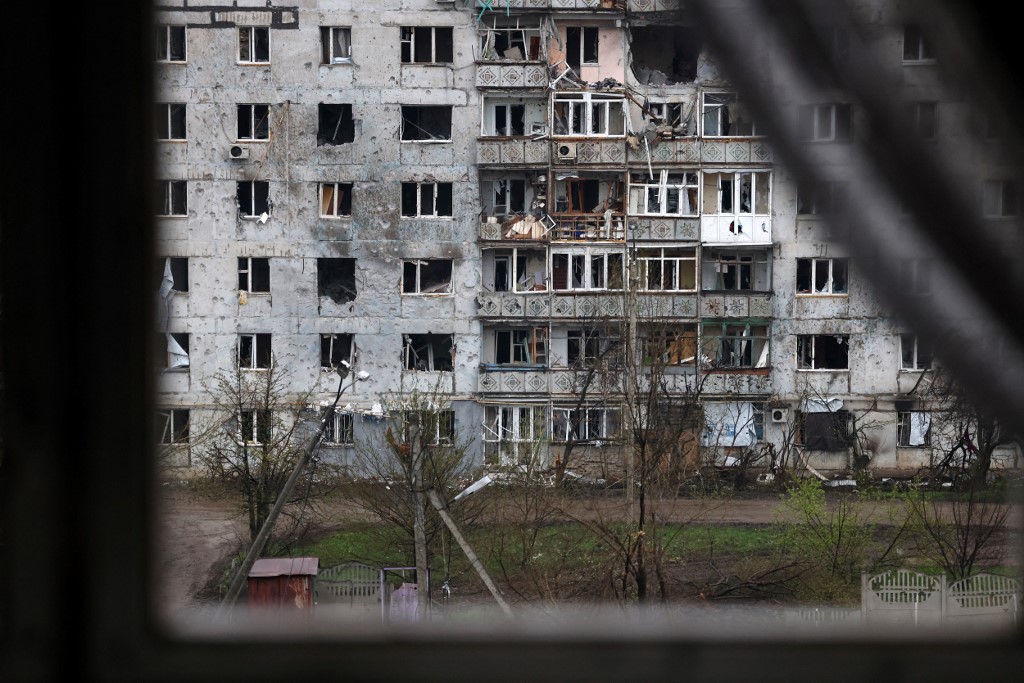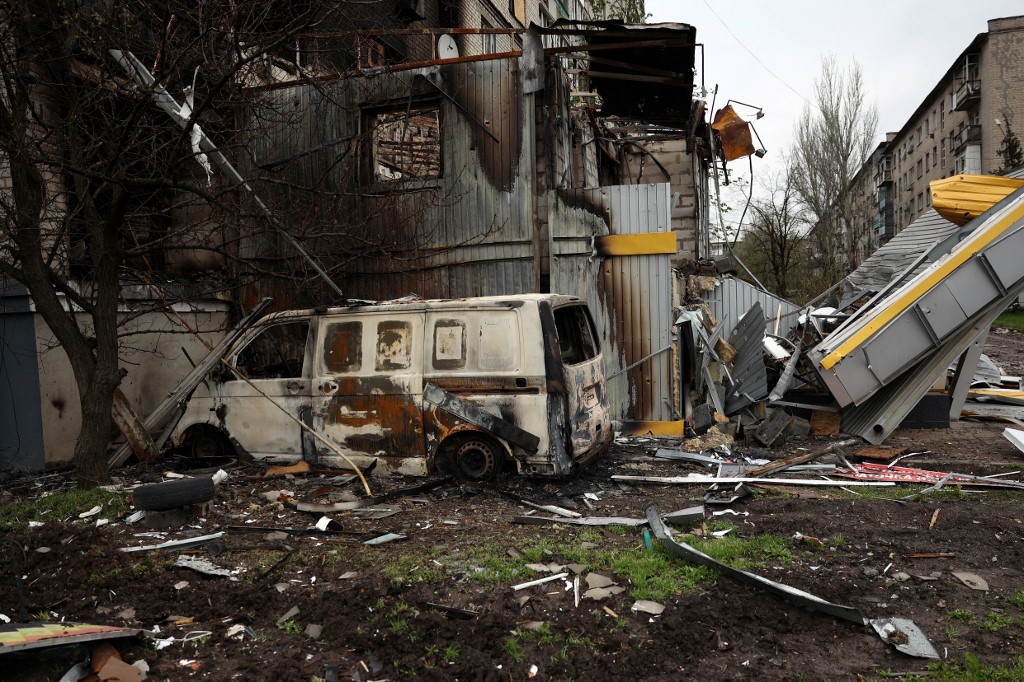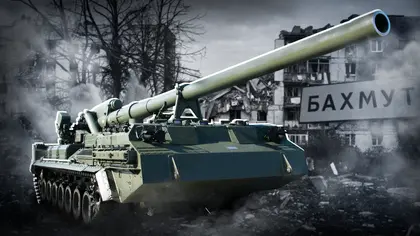Russia has “improved” its tactics in Bakhmut, according to Ukrainian state broadcaster, Suspilne, citing Col. Gen. Oleksandr Syrsky, commander of the ground forces in Ukraine
“For the Bakhmut assaults, the Russians improved their tactics, formed units to compensate for losses, actively using drones and gadgets to coordinate their actions,” the broadcaster quoted him as saying earlier this week.
JOIN US ON TELEGRAM
Follow our coverage of the war on the @Kyivpost_official.
But according to Ukrainian personnel on the ground, speaking to Kyiv Post on condition of anonymity, the only constant tactic that has given reliable results for incoming generals and the Russian army at large is that of the scorched-earth variety. The techniques vary, they said, but the end result is the same: the complete erasure of any settlements in their way.
 This photograph, taken April 23, 2023, shows a residential building damaged by shelling in the front-line town of Bakhmut, Donetsk region, on April 23, 2023, during the Russian invasion of Ukraine.Anatoly Stepanov / AFP
This photograph, taken April 23, 2023, shows a residential building damaged by shelling in the front-line town of Bakhmut, Donetsk region, on April 23, 2023, during the Russian invasion of Ukraine.Anatoly Stepanov / AFP
The soldiers reported that Bakhmut is being shelled by multiple launch rocket systems, tanks, howitzers, artillery installations, machine guns, mortars, attack drones and phosphorous bombs (prohibited by the Geneva Convention) that burn everything in their path. In addition, the enemy employs carpet bombing, destroying entire neighborhoods in a single sortie. The use of heavy aerial bombs, weighing 500-1,500 kilograms, and thermal magnesium bombs that easily burn through armored vehicles has been recorded.

Moscow Recruits Yemeni Mercenaries for War in Ukraine, Report Says
No less terrible a weapon is the “peony,” or 2S7 Pion self-propelled artillery cannon. (Like the 2S1 Gvozdika, or “carnation,” and the 2S3 Akatsiya, or “acacia,” the Russians named the weapon after a flowering plant.) After impact, the cannon’s shell leaves a crater about five meters deep.
According to soldiers of the 93rd Brigade now deployed in Bakhmut, the Russian forces there began collecting hundreds of peonies in October. The Russian Federation has thousands of such cannons and is currently emptying its supplies from Siberia.
"Even 70 Pions is already bad,” a soldier of the 93rd Brigade with the call sign "Baron" told Kyiv Post. “In general, the Soviet Pion was designed for the use of nuclear projectiles, the zone of destruction of which is 30 km, while the range of the gun is 47 km. So, for example, if you put 50 of them 40 km from the Dnipro River, after one day the city will no longer exist.
“This is what we are worried about. Of course, no one will use nuclear missiles or bombs, but they can use shells. Just one of them will be enough to make this area around the Dnipro uninhabitable for decades."
 This photograph, taken April 23, 2023, shows a wrecked car near a residential building hit by shelling in the front-line town of Bakhmut, Donetsk region, on April 23, 2023, against the backdrop of the Russian invasion of Ukraine.Anatoly Stepanov / AFP
This photograph, taken April 23, 2023, shows a wrecked car near a residential building hit by shelling in the front-line town of Bakhmut, Donetsk region, on April 23, 2023, against the backdrop of the Russian invasion of Ukraine.Anatoly Stepanov / AFP
As for tactics, as recently as this past winter the Russians had been firing single shots through windows and would wait for the return volley to locate the Ukrainian defenders. Now, according to the soldiers in Bakhmut, no one is firing single shots anymore. Only machine guns and hand-held anti-tank grenade launchers are used.
"Once I saw [a video] on a tablet showing two invaders standing behind the corner. They take turns running out and firing grenade launchers, so about ten rockets were fired and then they escaped. Another time I saw how the Russians made a hole in the wall of a building and shot through absolutely every house from there. The houses caught fire and they were waiting for the Ukrainian military to start jumping out to immediately shoot them," said another soldier of the 93rd Brigade.
In addition, the Russians have a large number of unmanned aerial vehicles. They are launched in packs: reconnaissance vehicles that transmit coordinates to mortar and other artillery units and several strike vehicles that hit the target at once. The soldiers noted that once the drone sets the target, the Russians usually fire five shots and the last, sixth one is a “control” shot.
"A drone arrives, sees you, and transmits information about where to shoot. First they make five shots, and then they wait and watch, and after a while they still make the last control shot. One day I went out for water and just came across a drone. Five shells hit around me at once, then I grabbed my wallet between my teeth and hid in a pit. I knew that this was not all, and sooner or later they would shoot off more. In the end I ran back like a child," recalls the Baron.
These tactics, which have ramped up during the Russians’ full-scale invasion of Ukraine, demonstrate that unmanned aerial vehicles have become the key to waging modern conventional warfare. If the military unit has sufficient artillery experience, they can use coordinates to destroy the enemy for the first time from virtually any distance.
"When we were in Soledar, we were very well served by the drone operator, who warned us about the enemy's location in advance,” the Baron recalls. “But when he was injured, problems immediately began to surface because no one had any experience with a drone. The aerial vehicle would fall from the sky, or the battery ran out, or flew to the wrong place, and so on.”
You can also highlight the text and press Ctrl + Enter






